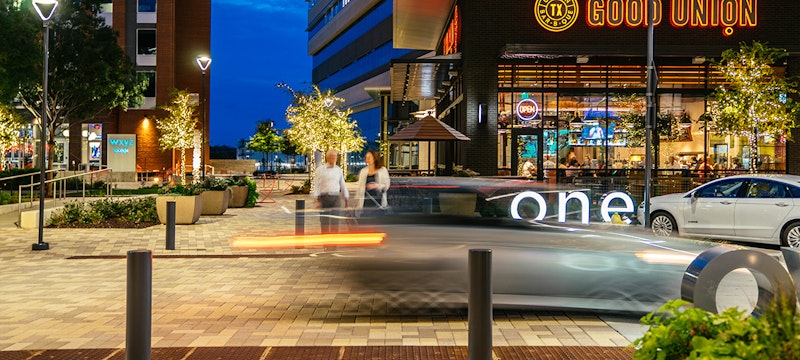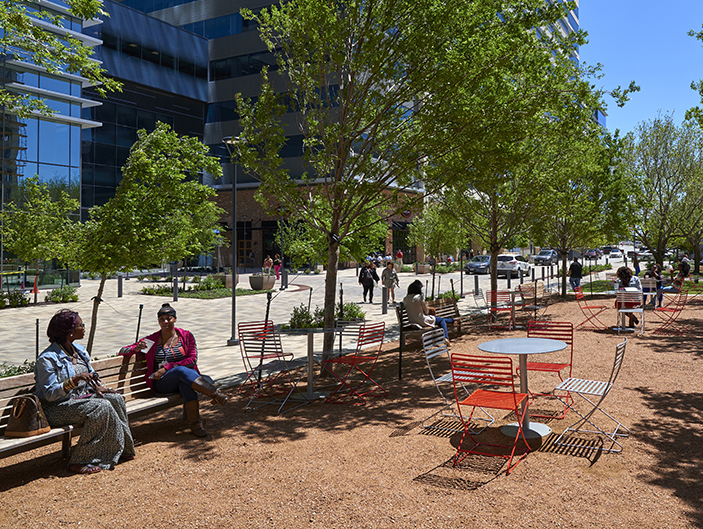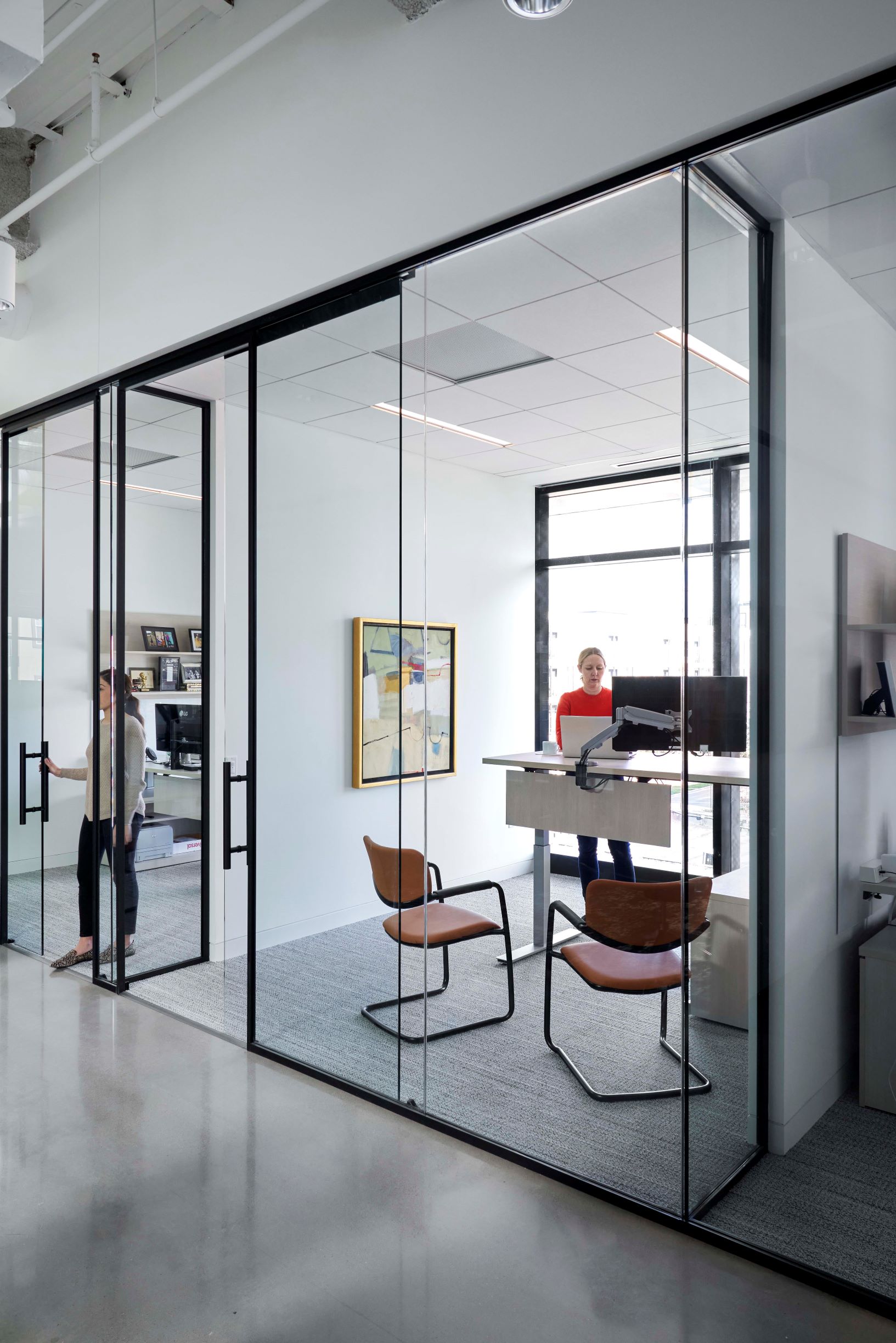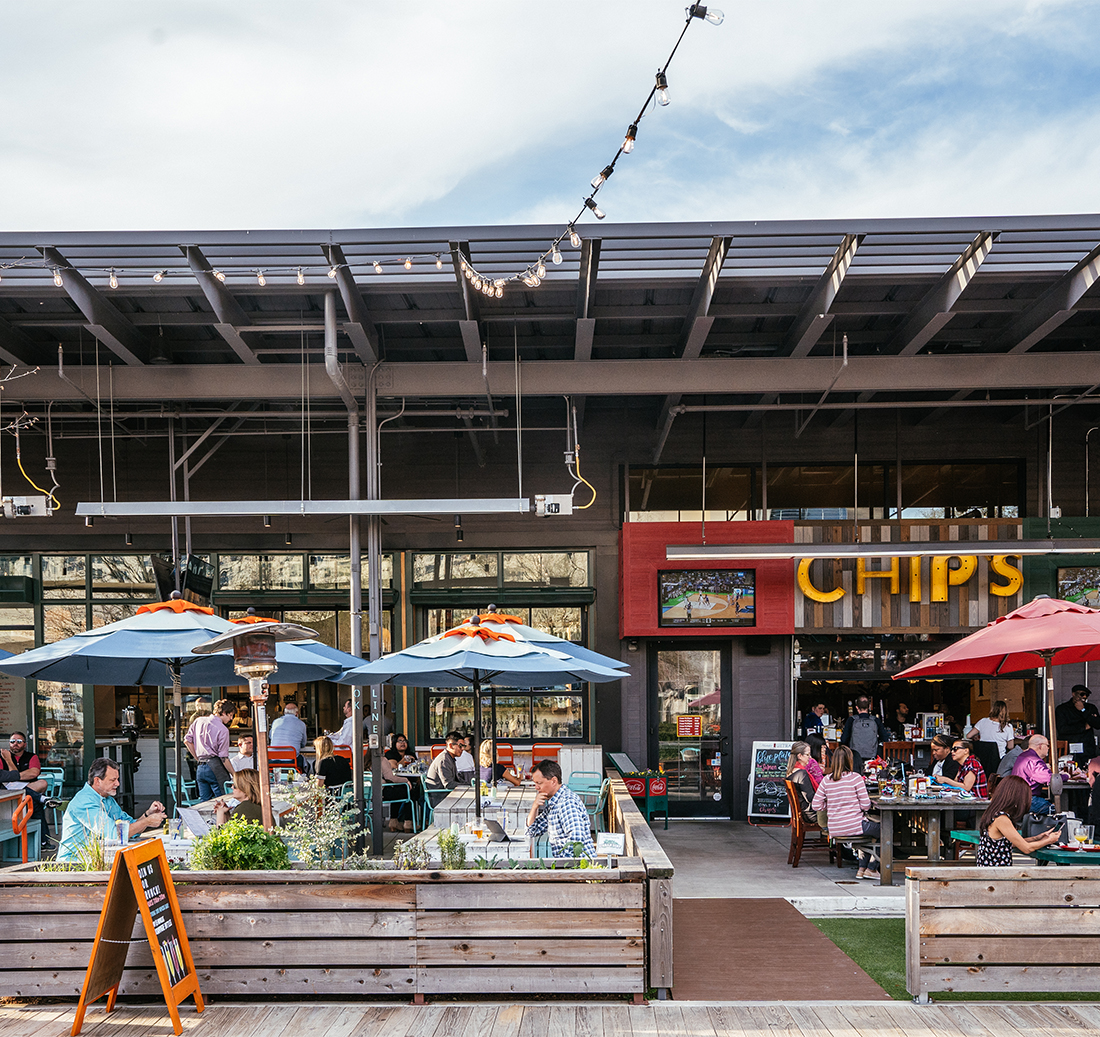Mixed Use in a Post-COVID-19 World

The future impact of COVID-19 on our buildings and cities is not entirely clear but there are some big ideas that we need to be considering.
LESS DENSITY
The first of these is density, from how close our desks are to the FAR on a development site. COVID-19 has made us much more aware of how close together we are and who has been in the space we are now occupying. Practical impacts of this include more outdoor open spaces and wider sidewalks. Other impacts include the desire to limit the number of elevators we ride in our daily routines which argues for smaller, shorter buildings – again, less density.

HORIZONTAL, NOT VERTICAL
As we consider the trend of lower densities I believe we could see less vertical mixed use and more horizontal mixed use. This means fewer uses stacked into tall, complicated, expensive buildings with lots of elevators, and more uses separated in less expensive, less dense individual building located next to each other. Horizontal development also reinforces the WELL-Building trend of safer interchange of air in our buildings, another trend to watch.
RECONSIDERING TRANSIT-ORIENTED DEVELOPMENT
COVID-19 has made us much more aware of our surroundings which is making crowded public transit systems much less desirable. This in turn may cause a re-think of transit oriented development. Many recent articles have stated that COVID-19 may even create a resurgence of lower density suburban development. More on that in a minute.
CHANGING TRENDS IN THE INDIVIDUAL USES OF MIXED USE
The workplace is changing. Work From Home will continue to be a part of our work routine which will lower office densities, and dampen demand for office space perhaps by as much as 10% to 30%. It will likely slow the trend of co-working and shared spaces with more dedicated and private work spaces. Some developers want to build quick-in and quick-out low rise office space for people dropping in to the workplace while also working from home.

LESS HOTEL DEMAND
COVID-19 has dramatically decreased travel, both business and pleasure and therefore the demand for hotel rooms. When demand starts to return, there may be a preference for smaller, low rise properties. We will likely see a rise in boutique hotels.
MULTIFAMILY
Multifamily seems to be the bright spot in the mixed-use demand picture. Our multifamily work is still going and the economic trends seem to support more development. As WFH continues to be a part of our work lives, I anticipate that unit designs will incorporate small work areas into the floorplan to make the residence more functional for WFH.
ENTERTAINMENT & RETAIL
Restaurants will return to capacity, particularly those with outdoor dining options. Grocery stores will prosper as people spend more time at home. Retail will continue to evolve but I see a future with far fewer credit tenants and more pop-up and temporary retail that is curated and constantly changing. This could be as simple as container parks to shed-like spaces that are inexpensive and easily reconfigured. Pop-up and temporary retail has already proven to partner well with internet retailing.

SUMMARY
We are social creatures. We will always want to be with others and experience community through public space and urban design, but there could be a nuanced change in how we create those environments. I can imagine Urban Villages replacing high density Urban Nodes. Lower density mixed use environments that are walkable, safe environments where you can live, work and shop near home will be popular. These places will have lots of open space and will focus on the pedestrian.
QUESTIONS FOR THE FUTURE
Will land values trend down to allow a lower density future?
Will we forget COVID-19 or tire of burdensome protocols, or get a vaccine, and return back to our previous “normal”?
Connect with Us
Enter your email address to receive the latest news delivered right to your inbox.
